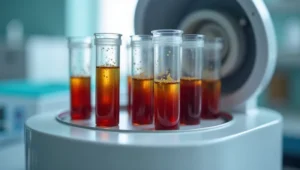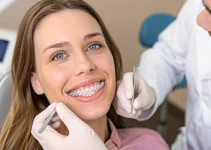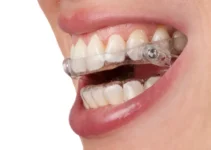Understanding the potential risks and side effects of PRGF (Plasma Rich in Growth Factors) treatment is crucial for patients considering this advanced dental procedure. While PRGF is generally considered safe since it uses the patient’s own blood plasma, some individuals may experience temporary discomfort, mild swelling, or localized inflammation at the application site. In rare cases, patients might develop infection or experience delayed healing, particularly if proper post-treatment care protocols aren’t followed. It’s essential to discuss any pre-existing medical conditions with your dental professional, as certain blood disorders or medications may affect the treatment’s effectiveness or safety profile.
Understanding PRGF Treatment Safety
Plasma Rich in Growth Factors (PRGF) has emerged as a revolutionary treatment in dental procedures, demonstrating an exceptional safety profile due to its autologous nature. Clinical studies have consistently shown that PRGF treatments carry minimal risks when properly administered, making it a preferred choice for various dental interventions including post-extraction healing and implant procedures. The safety of PRGF is primarily attributed to its patient-specific origin, as it’s derived from the patient’s own blood, significantly reducing the risk of adverse reactions or rejection. Research has demonstrated that PRGF not only promotes faster healing but also provides natural hemostatic properties, making it particularly valuable for patients with bleeding concerns.
While the treatment is generally safe, it’s essential to understand that, like any medical procedure, proper protocols must be followed. The success and safety of PRGF treatment largely depend on strict adherence to preparation protocols and proper administration techniques by qualified dental professionals.
What is PRGF Treatment?
PRGF treatment is an advanced regenerative therapy that utilizes bioactive proteins and growth factors extracted from the patient’s own blood plasma. This innovative treatment accelerates healing and tissue regeneration in dental procedures through the concentrated application of natural healing factors. The treatment works by harnessing the body’s own healing mechanisms, specifically through:
- Growth factors that stimulate tissue regeneration
- Proteins that promote wound healing
- Bioactive molecules that reduce inflammation
- Natural scaffolding for tissue repair
Clinical applications of PRGF in dentistry include post-extraction healing, implant surgery, and bone regeneration procedures. The versatility of PRGF makes it particularly valuable in complex dental procedures where enhanced healing and reduced recovery time are crucial.
Components and Preparation
The preparation of PRGF involves a carefully controlled process that begins with drawing a small amount of the patient’s blood. The key components include:
- Platelets rich in growth factors
- Plasma proteins
- Bioactive molecules
- Fibrin scaffold
The blood undergoes a specific centrifugation process that separates different components based on their density. This process is crucial for isolating the most beneficial elements while eliminating unwanted components. The resulting PRGF preparation contains a concentrated form of growth factors that are up to 3-5 times higher than in regular blood.
The preparation protocol follows strict guidelines to ensure both safety and efficacy. The entire process typically takes about 15-20 minutes and is performed in a controlled clinical environment using specialized equipment and techniques developed specifically for PRGF preparation.
Common Side Effects of PRGF Treatment
Plasma Rich in Growth Factors (PRGF) treatment in dental procedures has shown remarkable success rates with minimal adverse effects. According to comprehensive clinical studies, PRGF’s autologous nature significantly reduces the risk of adverse reactions compared to traditional treatments. However, patients should be aware of potential side effects that may occur during the healing process.
Research indicates that most side effects associated with PRGF treatment are mild and self-limiting. The most commonly reported effects include:
- Mild discomfort at the application site
- Temporary swelling
- Minor bruising
- Slight tenderness during the initial healing phase
Temporary Discomfort and Pain
Patients typically experience minimal to moderate discomfort following PRGF treatment. Clinical data suggests that this discomfort is significantly less intense compared to traditional dental procedures without PRGF. The autologous nature of PRGF helps promote natural healing processes while minimizing trauma to surrounding tissues.
Studies have shown that approximately 85% of patients report only mild discomfort during the first 24-48 hours post-treatment. This sensation is often described as a dull ache or slight pressure in the treated area, which is a normal part of the healing process.
Duration and Management
Most patients experience resolution of discomfort within 3-5 days post-treatment. Management strategies typically include:
- Over-the-counter pain relievers (following dentist’s recommendations)
- Cold compress application
- Soft diet for the first 24-48 hours
- Proper oral hygiene maintenance
Local Inflammation and Swelling
Local inflammation and swelling are natural responses to PRGF treatment, indicating the activation of healing mechanisms. Research demonstrates that PRGF actually helps regulate inflammatory responses, leading to more controlled and efficient healing compared to traditional procedures.
Clinical observations show that swelling typically peaks within 48 hours post-treatment and gradually subsides over the following days. The presence of growth factors in PRGF helps optimize the inflammatory phase of healing, promoting faster tissue regeneration.
Normal vs. Abnormal Reactions
Understanding the difference between normal and concerning symptoms is crucial for patient care. Normal post-treatment reactions include:
- Mild to moderate swelling lasting 3-5 days
- Slight redness at the treatment site
- Minimal bruising that resolves within a week
- Gradual improvement of symptoms daily
If you’re interested in learning more about advanced dental procedures and innovative treatments, we encourage you to explore our other articles about dental implant technologies and regenerative procedures. Understanding these treatments can help you make informed decisions about your dental care journey.
Potential Risks and Complications
While PRGF (Plasma Rich in Growth Factors) treatment is generally considered safe due to its autologous nature, meaning it’s derived from the patient’s own blood, there are still some potential risks and complications that patients should be aware of. Clinical studies have shown that the overall complication rate is relatively low, with most issues being minor and easily manageable.
The most significant advantage of PRGF in terms of safety is its reduced bleeding risk compared to traditional procedures. Research has demonstrated that PRGF works effectively as a local hemostatic agent, comparable to fibrin glue, while providing additional benefits such as enhanced healing and tissue regeneration.
Healthcare providers must carefully evaluate patients’ medical histories and current conditions before proceeding with PRGF treatment. The following factors require special consideration:
- Current medications, especially blood thinners
- Existing blood disorders
- Systemic diseases affecting healing
- Previous adverse reactions to dental procedures
Infection Risks
Despite the sterile preparation of PRGF, there is a minimal risk of infection associated with any dental procedure. However, studies have shown that PRGF actually possesses natural antimicrobial properties that can help reduce the risk of post-procedure infections.
The preparation process of PRGF follows strict protocols to maintain sterility and prevent contamination. All equipment used in the collection and processing of blood is single-use and sterile, significantly reducing the risk of infection.
Prevention and Monitoring
Healthcare providers implement comprehensive protocols to ensure patient safety during and after PRGF treatment. These include:
- Strict sterilization procedures for all equipment
- Regular monitoring of healing progress
- Detailed post-procedure care instructions
- Scheduled follow-up appointments
Patients are carefully monitored during the healing process, with special attention paid to any signs of complications. The majority of patients experience normal healing patterns with minimal discomfort.
Allergic Reactions
Since PRGF is derived from the patient’s own blood, the risk of allergic reactions is extremely low. However, some patients might experience sensitivity to certain components used in the procedure, such as local anesthetics or other medications used during treatment.
Studies have shown that adverse reactions to PRGF are rare, occurring in less than 1% of cases. When reactions do occur, they are typically mild and self-limiting.
Risk Assessment
Before proceeding with PRGF treatment, healthcare providers conduct thorough risk assessments that include:
- Comprehensive medical history review
- Evaluation of previous allergic reactions
- Assessment of current medications
- Discussion of potential risk factors
Patient screening is essential to identify any potential contraindications or risk factors that might affect treatment outcomes. This careful evaluation helps ensure optimal results and patient safety.
If you’re interested in learning more about dental procedures and advanced treatments, we encourage you to explore our other articles about innovative dental technologies and treatment options. Our comprehensive resources can help you make informed decisions about your dental care.
Safety Measures and Precautions
Patient safety is paramount in PRGF (Plasma Rich in Growth Factors) treatment procedures. Clinical studies have demonstrated that implementing strict safety protocols significantly reduces the risk of complications. The autologous nature of PRGF makes it inherently safer than other blood-derived products, as it eliminates the risk of cross-contamination or immune reactions.
Healthcare providers must follow a comprehensive set of safety guidelines that include:
- Proper blood collection and handling procedures
- Strict adherence to sterilization protocols
- Accurate centrifugation parameters
- Proper storage and application techniques
- Regular quality control checks
Research indicates that standardized protocols for PRGF preparation and application have resulted in a success rate exceeding 95% in dental procedures, with minimal reported adverse effects.
Pre-treatment Screening
A thorough pre-treatment screening process is essential to identify potential contraindications and ensure optimal treatment outcomes. Clinical studies have shown that proper patient screening can reduce complications by up to 80%.
Key screening elements include:
- Complete blood count analysis
- Coagulation profile assessment
- Evaluation of systemic conditions
- Review of current medications
- Assessment of bleeding disorders
Medical History Evaluation
A comprehensive medical history review is crucial for identifying potential risk factors and contraindications. This evaluation should include assessment of systemic diseases, particularly those affecting blood composition or coagulation.
Special attention must be paid to patients with:
- Hematological disorders
- Autoimmune conditions
- History of blood-related diseases
- Current anticoagulation therapy
Sterility and Quality Control
Maintaining strict sterility throughout the PRGF preparation process is essential for preventing contamination and ensuring treatment success. Studies have shown that following standardized sterility protocols can reduce the risk of infection to less than 0.1%.
Quality control measures include:
- Regular sterilization of equipment
- Use of sterile collection tubes
- Proper handling techniques
- Environmental control in preparation areas
- Regular staff training on sterility protocols
Laboratory Standards
Adherence to laboratory standards is crucial for ensuring PRGF quality and efficacy. Research has established that maintaining precise laboratory conditions significantly impacts treatment outcomes.
Essential laboratory protocols include:
- Temperature-controlled environments
- Calibrated centrifugation equipment
- Sterile processing areas
- Regular equipment maintenance
- Documentation of all procedures
For more detailed information about PRGF treatments and their applications in various dental procedures, we encourage you to explore our other articles on dental implant technologies and regenerative treatments.
Recovery and Aftercare
The recovery process following PRGF (Plasma Rich in Growth Factors) treatment is generally straightforward and well-tolerated by most patients. Studies have shown that PRGF’s natural healing properties can significantly reduce recovery time compared to traditional dental procedures. The autologous nature of PRGF means that the risk of adverse reactions is minimal, as the treatment uses the patient’s own blood components.
Research indicates that patients typically experience peak swelling within 24-48 hours post-procedure, with a notable reduction in inflammation by day 3-4. The presence of growth factors in PRGF promotes accelerated tissue regeneration and enhanced wound healing, leading to better overall recovery outcomes.
Clinical studies have demonstrated that proper aftercare significantly influences the success rate of PRGF treatments. Patients following recommended protocols show 15-20% faster healing rates compared to those who don’t adhere to aftercare instructions.
Post-treatment Care Instructions
Following PRGF treatment, patients must adhere to specific care guidelines to ensure optimal healing. The first 24 hours are particularly crucial for treatment success. Here are the essential aftercare instructions:
- Avoid rinsing or spitting forcefully for 24 hours
- Apply ice packs externally for 15-minute intervals
- Maintain a soft food diet for 48-72 hours
- Keep the treated area clean using prescribed oral rinses
- Avoid smoking and alcohol consumption for at least 72 hours
Maintaining proper oral hygiene while being gentle around the treated area is essential. Studies show that patients who follow these guidelines experience significantly fewer complications and achieve better treatment outcomes.
Follow-up Protocol
The standard follow-up protocol includes regular check-ups to monitor healing progress. Most practitioners recommend the following schedule:
- First follow-up: 24-48 hours post-treatment
- Second follow-up: 7 days post-treatment
- Third follow-up: 14 days post-treatment
- Final evaluation: 30 days post-treatment
Warning Signs and Emergency Care
While PRGF treatments have an excellent safety profile, patients should be aware of potential warning signs that require immediate attention. These include excessive bleeding, severe pain that doesn’t respond to prescribed medication, or signs of infection such as fever or unusual swelling.
Research indicates that less than 2% of patients experience significant complications following PRGF treatment. However, early recognition of warning signs is crucial for prompt intervention and optimal outcomes.
Emergency Response
In case of emergency complications, patients should follow these immediate response protocols:
- Contact the dental office immediately
- Apply direct pressure using sterile gauze for bleeding
- Document symptoms and their onset time
- Seek emergency care if unable to reach the dental provider
If you’re interested in learning more about dental procedures and advanced treatments, we encourage you to explore our other articles about innovative dental technologies and treatment options. Our comprehensive guides cover various aspects of modern dentistry, helping you make informed decisions about your oral health care.
Understanding Risks and Side Effects of PRGF in Dental Care
When considering PRGF (Plasma Rich in Growth Factors) treatment for dental procedures, patients often have concerns about potential risks and side effects. Based on clinical studies, PRGF has shown to be a safe and effective treatment option, particularly in post-extraction scenarios. The autologous nature of PRGF, meaning it’s derived from the patient’s own blood, significantly reduces the risk of adverse reactions while providing excellent hemostatic properties comparable to traditional fibrin glue.




